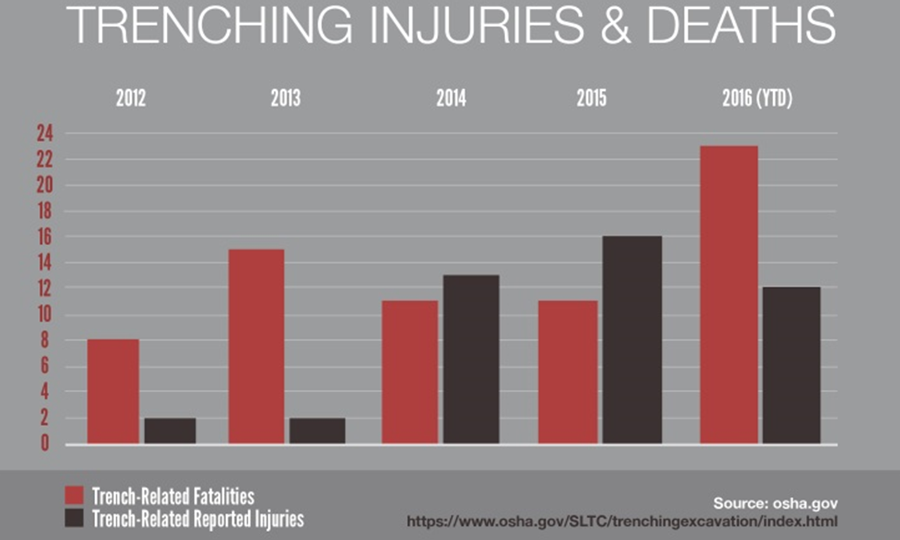Posted with permission from Confined Space, a newsletter of workplace safety and labor issues.
“Touching” “Infuriating” and hopefully “Educational” and “Motivating” are all words that come to mind reading this amazing article, Death in the Trench, by veteran investigative reporter Jim Morris. You should probably stop here and read it, but I can’t help providing a few reasons why.
Morris, writing for the Center for Public Integrity, tells the story of the 2016 death of Jim Spencer, buried alive in an 8-foot deep trench. Going beyond the raw statistics (Twenty-six workers died in trench collapses in the United States in 2016 – twice as many as the year before), Morris describes the impact of Spencer’s death on his wife of nearly 40 years, family and community — and why it didn’t need to happen:
Shocking, even to me who has been infuriated by trench collapses for 35 years, is Morris’s findings that the heads of the construction company and contractor that employed Spencer claimed that they didn’t know about trench collapses and how to protect workers. And most shocking is an observation by retired OSHA inspector John Newquist, who had investigated more than 100 trench collapses during his 29 years with OSHA. Newquist, currently and health and safety trainer and consultant
Morris doesn’t stop with the crime itself, but goes on to look at the structural problems at OSHA that allow these type of preventable tragedies to keep occurring — low budget, short staff, low fines (the two companies involved in Spencer’s death were assessed fines of $24,800 and $16,800, respectively), and weak criminal penalties — and some of the things that the Obama administration tried to do about it, especially in the area of negative publicity:
But enough of my musings. I’m going to stop here to give you time to read. And while you’re at it, support investigative journalism. It’s not the statistics, but stories like these that can bring change in this country. You can donate to the Center for Public Integrity here. I just did.
Click here to visit Confined Space.

